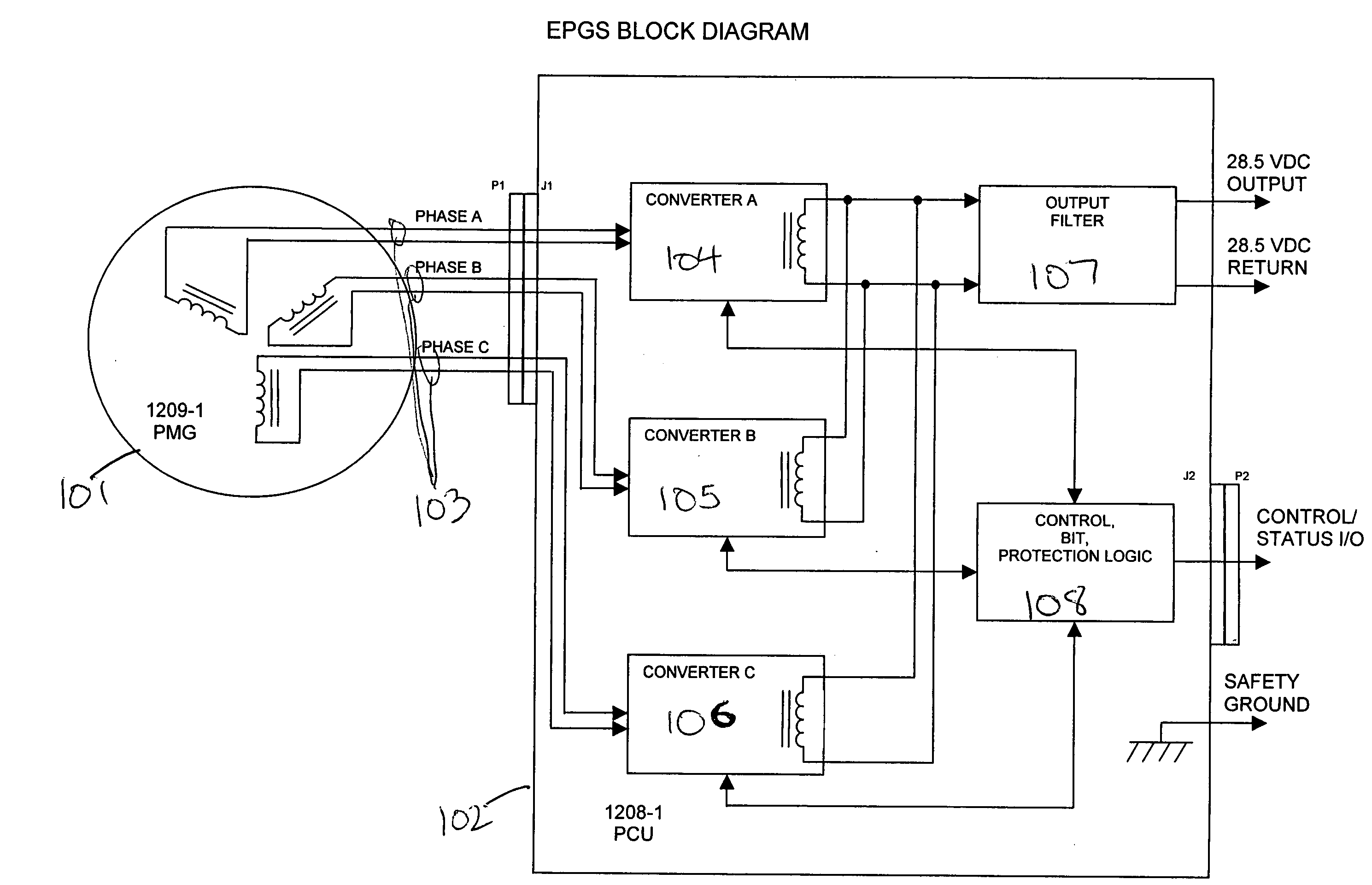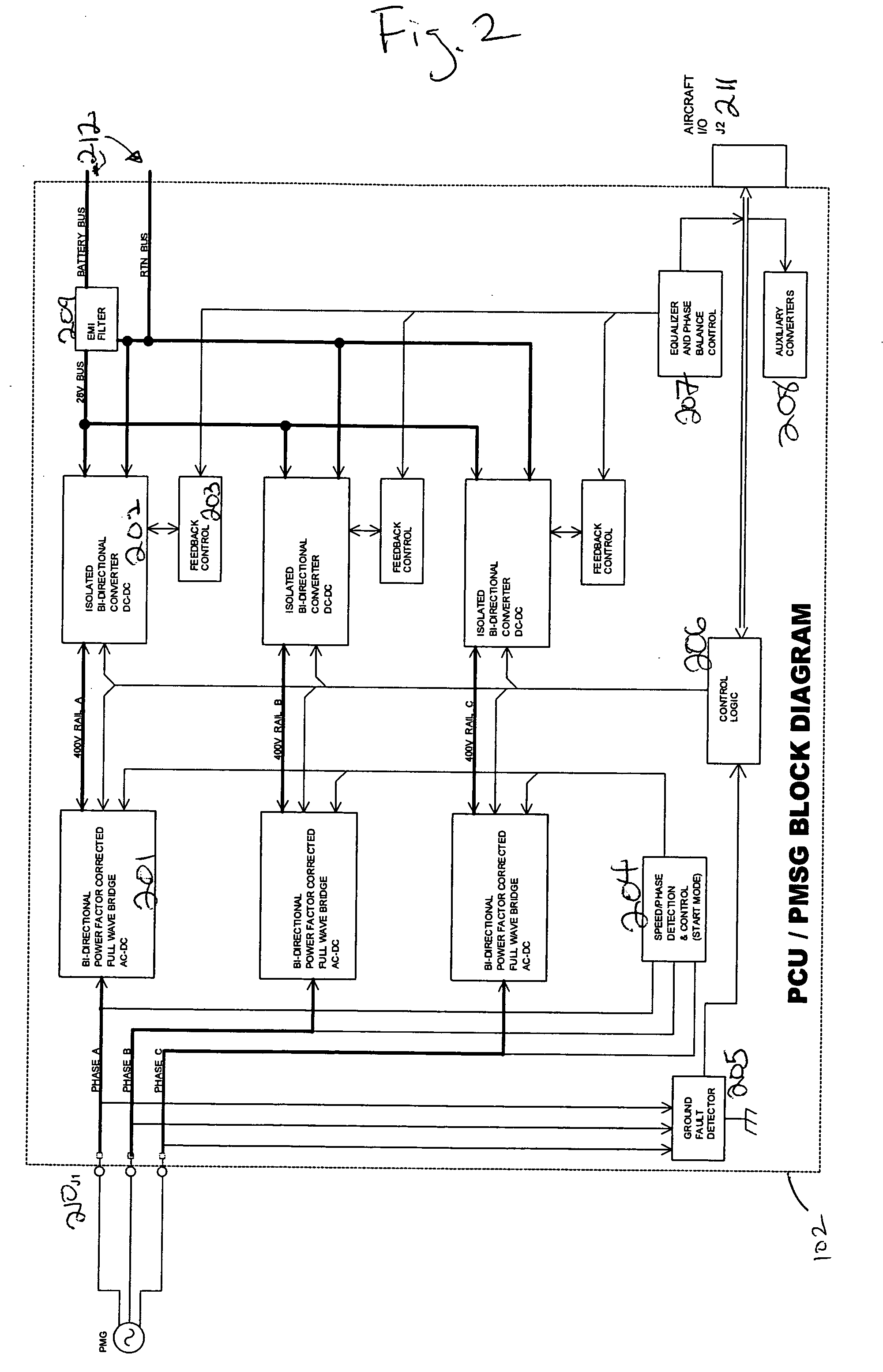Fault tolerant architecture for permanent magnet starter generator subsystem
a technology of starter generator and fault tolerance, which is applied in the direction of motor/generator/converter stopper, electric generator control, dynamo-electric converter control, etc., can solve the problems of increasing size and weight, dc brushed machine requires relatively frequent maintenance, and is difficult to meet the needs of maintenance and repair. , to achieve the effect of high reliability and fault toleran
- Summary
- Abstract
- Description
- Claims
- Application Information
AI Technical Summary
Benefits of technology
Problems solved by technology
Method used
Image
Examples
Embodiment Construction
[0017]FIG. 1 is a block diagram of a power conversion unit (PCU) and permanent magnet generator (PMG) that illustrates the electrical interface. The PMG 101 is connected to the PCU 102 by a plurality of pairs of wires 103. Each pair of the wires carries a different phase of voltage between the PMG 101 and PCU 102. The voltage is derived in the PMG 101 and converted to the desired output voltage by the PCU 102 when the starter / generator subsystem is operating as a generator. The voltage is derived from a power source connected to the PCU 102 output (labeled “28.5VDC Output” and “28.5VDC Return” in FIG. 1), converted by the PCU 102 to an AC voltage of the desired form, and provided to the PMG 101, when the starter / generator subsystem is operating as a starter. The AC voltage derived in the PCU 102 while operating in the start mode, is specifically regulated in amplitude, frequency and phase angle so as to control the speed, direction of rotation and the torque produced by the PMG 101....
PUM
 Login to View More
Login to View More Abstract
Description
Claims
Application Information
 Login to View More
Login to View More - R&D
- Intellectual Property
- Life Sciences
- Materials
- Tech Scout
- Unparalleled Data Quality
- Higher Quality Content
- 60% Fewer Hallucinations
Browse by: Latest US Patents, China's latest patents, Technical Efficacy Thesaurus, Application Domain, Technology Topic, Popular Technical Reports.
© 2025 PatSnap. All rights reserved.Legal|Privacy policy|Modern Slavery Act Transparency Statement|Sitemap|About US| Contact US: help@patsnap.com



